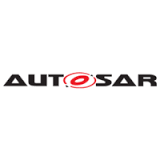
A number of “game changers” identified by the AUTOSAR consortium have led to the development of a new adaptive platform.
AUTOSAR (AUTomotive Open System ARchitecture) is a standardized and open software architecture for automotive electronic control units (ECUs). AUTOSAR is a cooperative of automotive manufacturers, automotive suppliers, tool vendors and semiconductor vendors. The AUTOSAR development partnership is focused on managing the growing complexity in the development of automotive electric/electronic (E/E) architectures, with the aim to enable new technologies and improve development efficiency – without making compromises on quality.
Simon Fürst, General Manager Software Development and Software Infrastructure with the BMW Group, who is also the current AUTOSAR spokesperson says the new system will be built on the “AUTOSAR Classic Platform,” which “remains the system of choice with regard to control units from the classical E/E domains of the automobile”.
“This platform continues to be the preferred solution for applications that have limited demands on hardware resources while fulfilling safety requirements and providing hard real – time capabilities. Upcoming new functionalities will be realized more efficiently by a software platform being designed for their special requirements. On the one hand we see, for example, there is a demand for number-crunching algorithms and high interconnectivity while on the other hand we have a focus on dependability of applications and systems, or new technologies such as ‘update over the air’”.
Among the “game changers” or main drivers for new automotive software systems identified by AUTOSAR are highly automated driving, Car-2-X applications, vehicle in the cloud and increased connectivity. Support required by highly automated driving systems include dependable architecture with fail-safe operational systems, support for cross-domain platforms, support for high-performance micro-controllers and computing, and distributed and remote diagnostics.
Car-2-X applications will require vehicle and off-board systems to interact. Requirements will include cloud interaction, software as a product and the integration of non-AUTOSAR systems. Dedicated security systems will need to be in place to support the vehicle in the cloud. This will include secure on-board communication, security architecture and secure cloud interaction.
The “AUTOSAR Adaptive Platform” is being developed to meet these requirements. Former AUTOSAR spokesperson Thomas Rüping agrees: “New requirements call for new solutions. And as AUTOSAR also aims to provide an optimal standardized software framework for new applications in the fields of connectivity and highly automated and autonomous driving, there will be a new product called “AUTOSAR Adaptive Platform” in the future.
Automotive Industries (AI) asked Fürst what are some of the important features of the AUTOSAR Adaptive Platform.
Fürst: The new AUTOSAR Adaptive Platform is an additional product to the well-estalished AUTOSAR Classic Platform. The main benefits for the user will be a dynamic system including the middleware, a support for complex OS via POSIX interface, and for state-of-the-art multicore microprocessors. AUTOSAR is heading for an early release 1.0 of the Adaptive Platform with a set of minimum required features. Enrichment of features will follow with short release cycles based on market requirements and feedback.
AI: The platform will be ‘cloud-enabled’ by your description – how important is interconnectivity and updates over the air today for automotive ECUs?
Fürst: In future, interconnectivity and over-the-air-updates will be must-have-features for automotive ECUs. Both are key features for interacting applications as well as to apply security updates and feature extensions in this field.
AI: When do you foresee a roll-out date for the AUTOSAR Adaptive Platform?
Fürst: From our current point of view, the initial release 1.0.0 of the new AUTOSAR Adaptive Platform will take place end of first quarter 2017. The development process has already started and working groups are set up as extensions to existing work packages in AUTOSAR. We are currently at the stage where we have the basic architecture of this adaptive platform defined and we agree on the look of the core interface layers for applications, the middle ware and to the operating systems. The AUTOSAR Adaptive Platform is a “real” software project now and no longer just a pure specification project.
AI: How has AUTOSAR’s Release 1.0 of Acceptance Tests and Release 4.2.2 of the Classic Platform changed the testing landscape for automotive OEMs?
Fürst: The test specifications released as the AUTOSAR Acceptance Tests Release 1.1.0 are applicable to the software specification of the AUTOSAR Release 4.2.2. Right now, they are in the roll-out phase at different OEMs and Tier 1. Our expectation is that through the harmonization of tests the test effort and the test costs will decrease on either side, the OEM and the Tier 1.
AI: How do you see the role of AUTOSAR evolving as myriad new requirements keep cropping up from automotive OEMs?
Fürst: Our role is to be a moderator between all partners. We consolidate the requirements and look out for the best solution. Furthermore, it is not in our interest to overload our standard with more than one solution for one requirement. We want to stabilize the Classic Platform. So that on the one hand, the strokes of required updates remain manageable and on the other hand, we will have fundamental new features in the Adaptive Platform.
AI: What are some of the new technologies you predict will change the automotive landscape over the next few years?
Fürst: In my opinion, one major development is going to be central computing platforms, which will shape a completely new E/E architecture. I presume it might be a service-oriented architecture with multi-layer services. There will also be high performance microcontrollers for these central computing platforms.













More Stories
Some Ways How Motorists End Up in Collisions at U-Turns
Maximise Margins with Proven PPF Tactics
Finding the Car Boot Release Button – Tips and Tricks